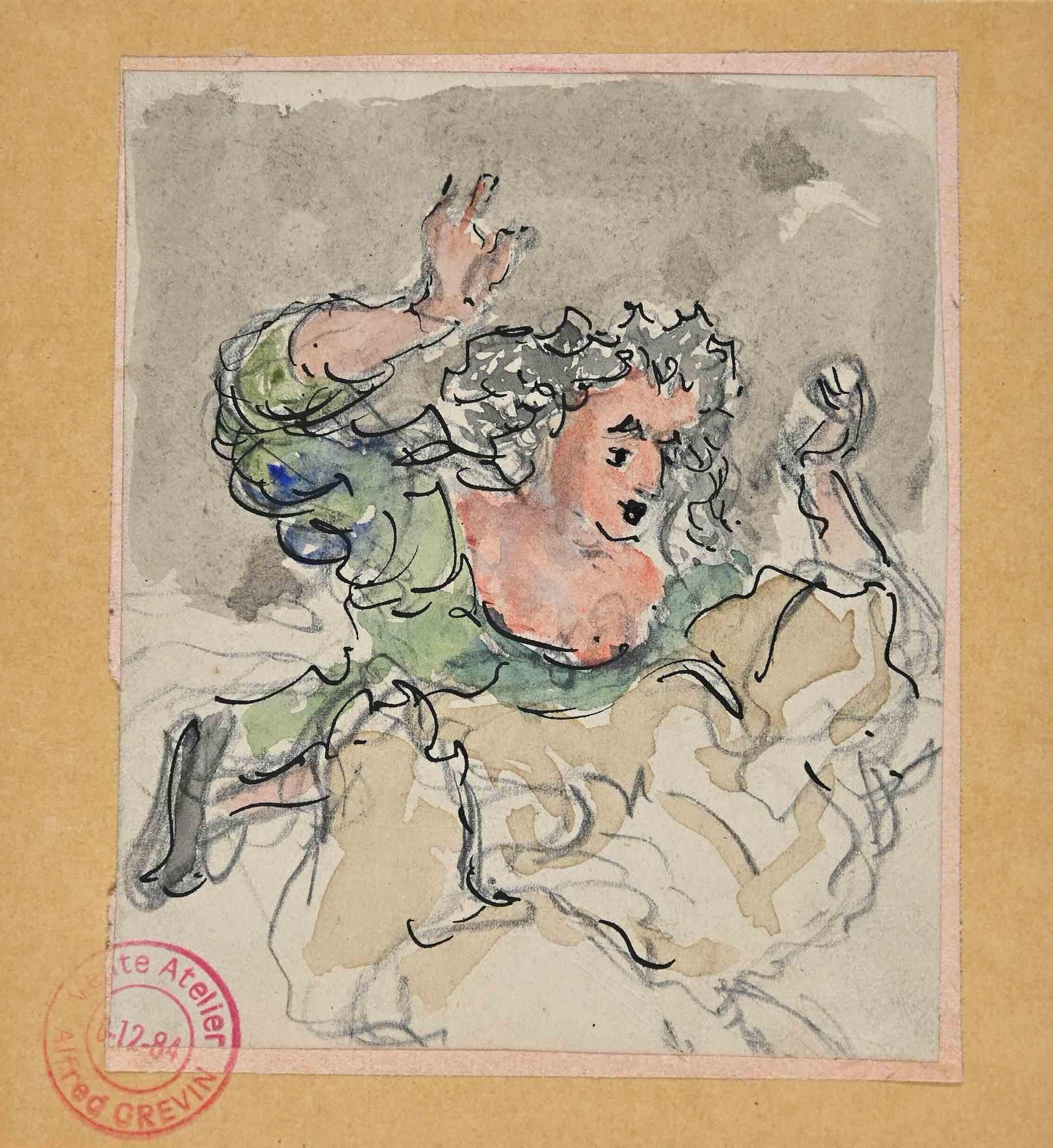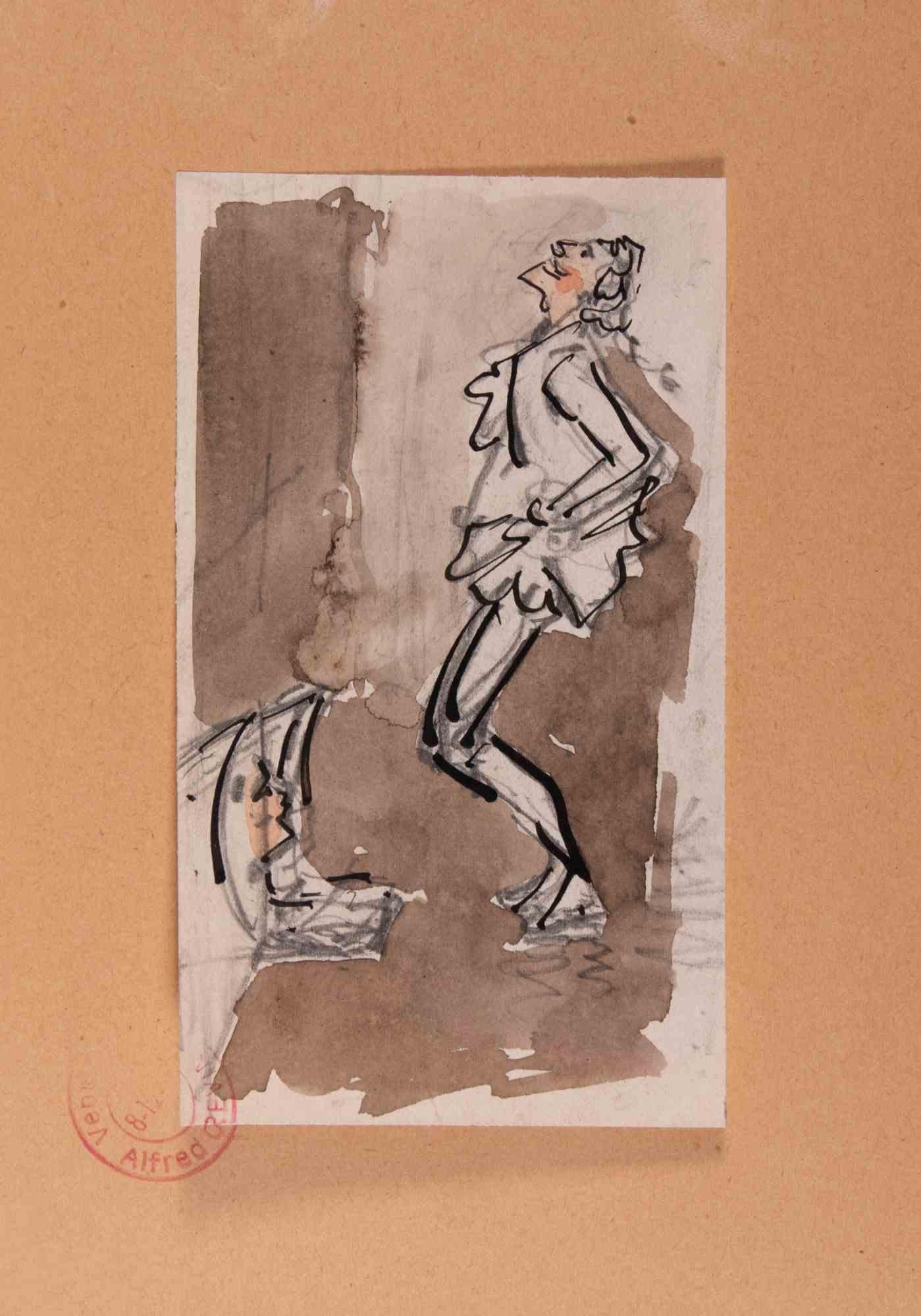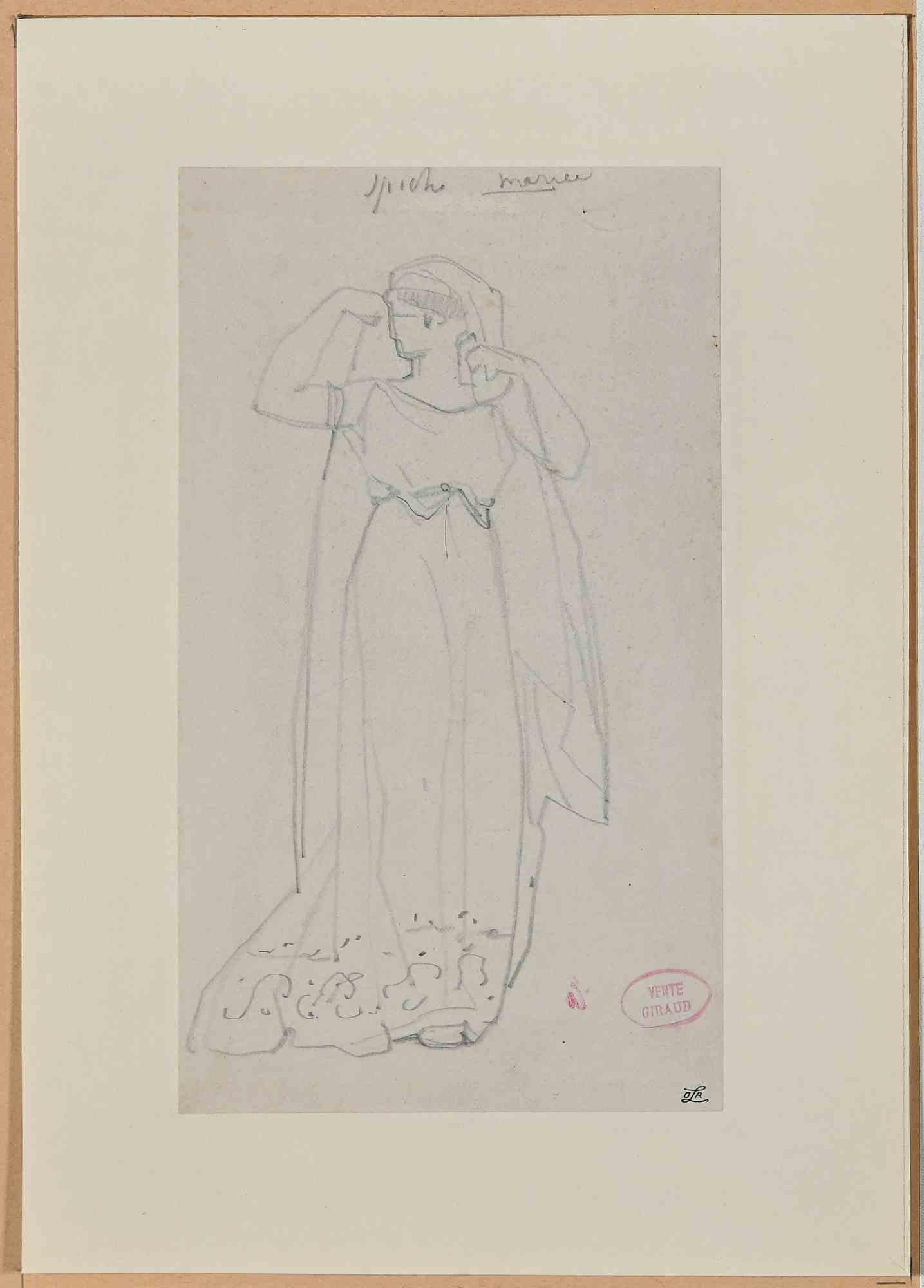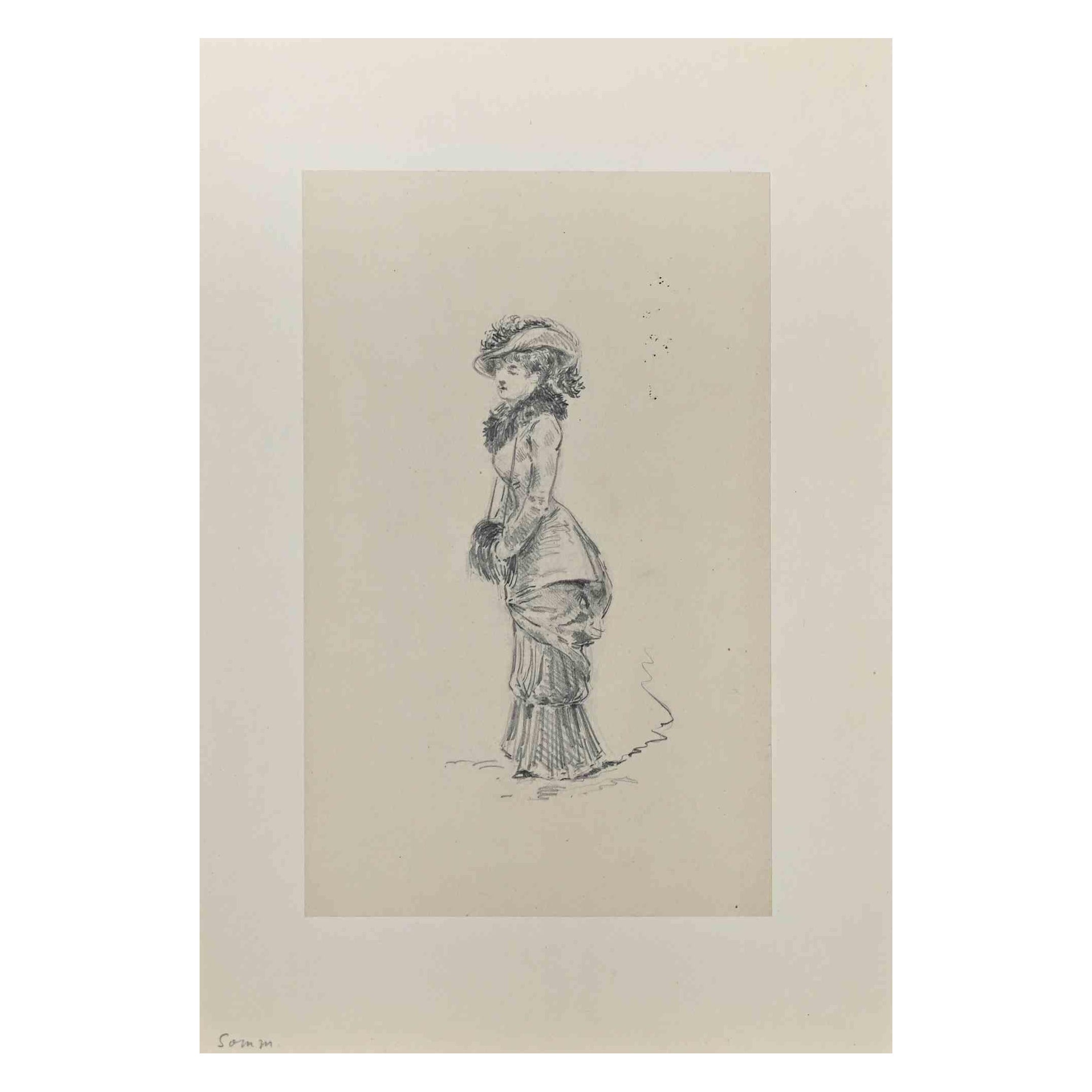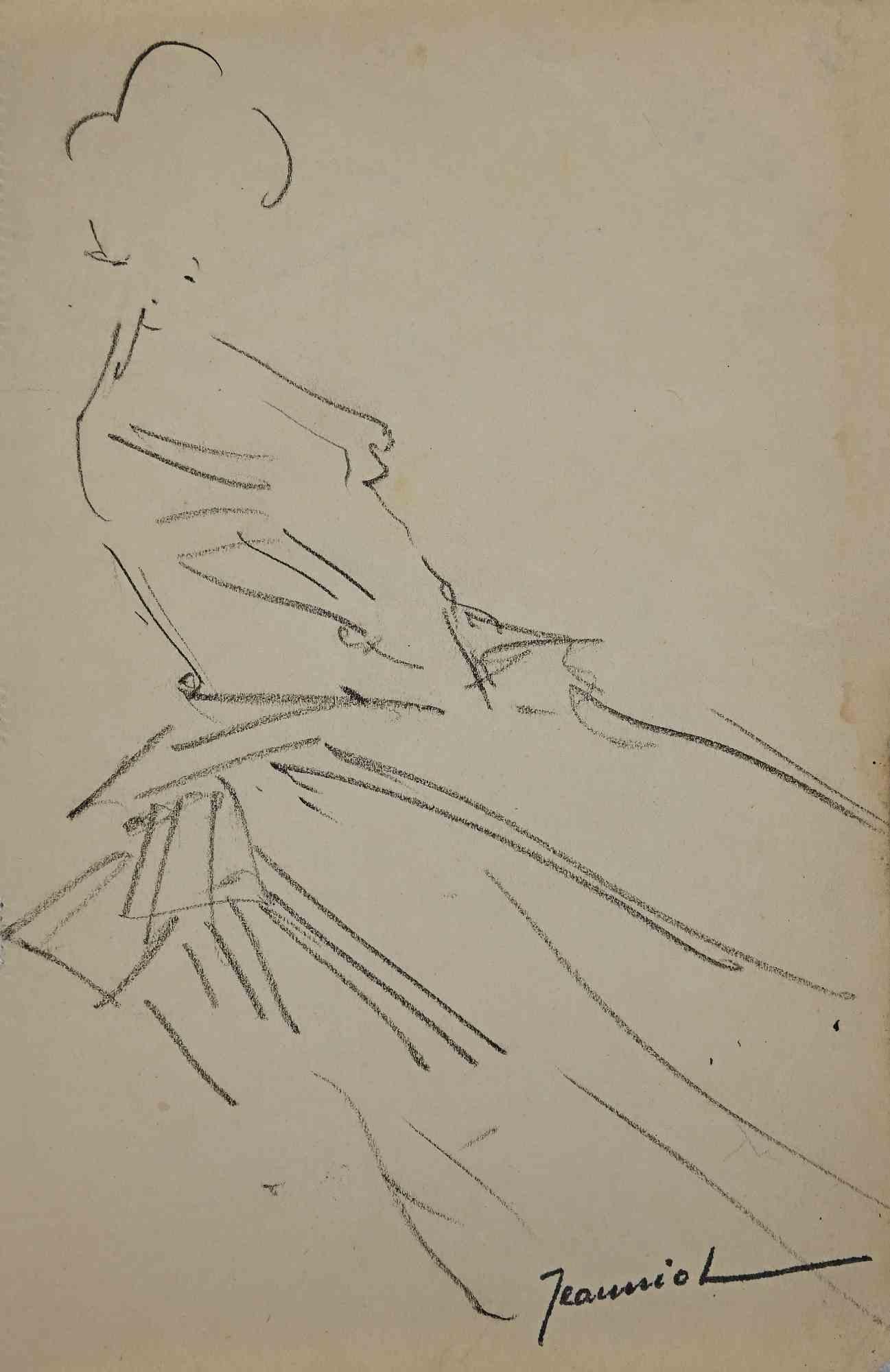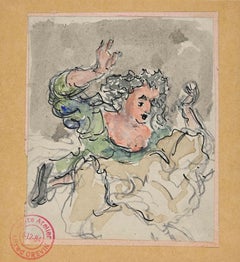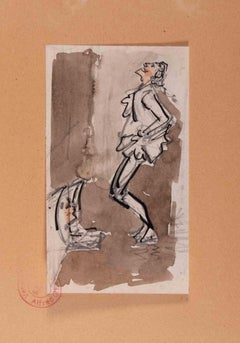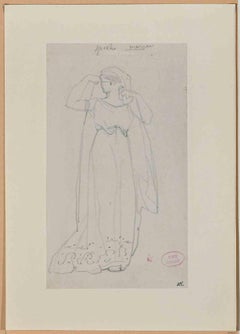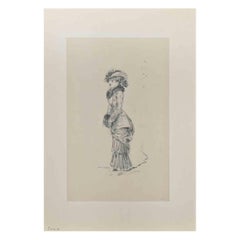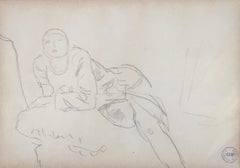Items Similar to You Girl - Original Drawing by Alfred Grévin - Late 19 Century
Want more images or videos?
Request additional images or videos from the seller
1 of 2
Alfred GrevinYou Girl - Original Drawing by Alfred Grévin - Late 19 CenturyLate 19th Century
Late 19th Century
$478.87
£353.24
€400
CA$663.50
A$720
CHF 381.53
MX$8,830.41
NOK 4,721.47
SEK 4,461.53
DKK 3,045.92
About the Item
You Girl is an original drawing in Mixed media realized by Alfred Grévin in the Late-19 Century
In good conditions.
Alfred Grévin (1827- 1892),
was a 19th-century caricaturist, best known during his lifetime for his caricature silhouettes of contemporary Parisian women. He was also a sculptor, cartoonist, and designed costumes and sets for popular theater. He founded with journalist Arthur Meyer the Musée Grévin, a waxwork museum, in many of his artworks he would seem to express his point of view on the progressive fall of women's costumes during the nineteenth century. He performed countless activities among which he distinguished himself as the creator of theatrical costumes
- Creator:Alfred Grevin (1827 - 1892, French)
- Creation Year:Late 19th Century
- Dimensions:Height: 9.06 in (23 cm)Width: 6.11 in (15.5 cm)Depth: 0.04 in (1 mm)
- Medium:
- Movement & Style:
- Period:
- Framing:Framing Options Available
- Condition:Insurance may be requested by customers as additional service, contact us for more information.
- Gallery Location:Roma, IT
- Reference Number:Seller: T-1309691stDibs: LU650310080082
About the Seller
4.9
Platinum Seller
Premium sellers with a 4.7+ rating and 24-hour response times
1stDibs seller since 2017
7,699 sales on 1stDibs
Typical response time: 3 hours
- ShippingRetrieving quote...Shipping from: Monaco, Monaco
- Return Policy
Authenticity Guarantee
In the unlikely event there’s an issue with an item’s authenticity, contact us within 1 year for a full refund. DetailsMoney-Back Guarantee
If your item is not as described, is damaged in transit, or does not arrive, contact us within 7 days for a full refund. Details24-Hour Cancellation
You have a 24-hour grace period in which to reconsider your purchase, with no questions asked.Vetted Professional Sellers
Our world-class sellers must adhere to strict standards for service and quality, maintaining the integrity of our listings.Price-Match Guarantee
If you find that a seller listed the same item for a lower price elsewhere, we’ll match it.Trusted Global Delivery
Our best-in-class carrier network provides specialized shipping options worldwide, including custom delivery.More From This Seller
View AllWoman- Original Drawing by Alfred Grévin - Late-19 Century
By Alfred Grevin
Located in Roma, IT
Woman is an original drawing in china ink and watercolor realized by Alfred Grévin in the Late-19 Century.
In good conditions.
Alfred Grévin (1827- 1892),
was a 19th-century caric...
Category
Late 19th Century Modern Figurative Drawings and Watercolors
Materials
Paper, Ink, Watercolor
Figure - Original Drawing by Alfred Grevin - Late 19th Century
By Alfred Grevin
Located in Roma, IT
Figure is an original drawing realized by Alfred Grévin in the Late-19 Century.
With the stamp of atelier "Grevin" on the lower right.
In good conditions.
Alfred Grévin (1827- 18...
Category
Late 19th Century Modern Figurative Drawings and Watercolors
Materials
Pencil
Woman- Original Drawing on Paper by E. Giraud - Late 19th Century
By Eugène Giraud
Located in Roma, IT
Woman of Man is an Original Drawing in Pencil realized by Eugène Giraud in the Late 19th Century.
Good conditions.
The delicate and beautiful fine strokes form the artwork. The mas...
Category
Mid-20th Century Modern Figurative Drawings and Watercolors
Materials
Paper, Pencil
Woman - Original Drawing on Paper by H. Somm - Late 19th Century
By Henry Somm
Located in Roma, IT
Woman is an Original Pencil Drawing realized by Henry Somm (1844-1907).
Good condition on a cream colored paper, included a grey cardboard passpartout (31.5x25 cm).
Not signed.
Fr...
Category
Late 19th Century Modern Figurative Drawings and Watercolors
Materials
Ink
Figure - Original Drawing By Pierre Georges Jeanniot - Early 20th Century
By Pierre Georges Jeanniot
Located in Roma, IT
Figure is an original Drawing on paper realized by painter Pierre Georges Jeanniot (1848-1934).
Drawing in Pencil.
Hand-signed on the lower.
Good conditions except for aged margin...
Category
Early 20th Century Modern Figurative Drawings and Watercolors
Materials
Pencil
Woman - Drawing by Pierre Georges Jeanniot - Early 20th Century
By Pierre Georges Jeanniot
Located in Roma, IT
Woman is a Pencil drawing realized by Pierre Georges Jeanniot in the Early 20th Century.
Good condition on a yellowed paper.
Hand-signed.
Pierre-Georges Jeanniot (1848–1934) wa...
Category
Early 20th Century Modern Figurative Drawings and Watercolors
Materials
Pencil
You May Also Like
Half-lying young woman
Located in Genève, GE
Stamp of the workshop lower right
Work on paper
Golden wood frame with glass pane
35.5 x 41 x 3.5 cm
Category
Mid-20th Century Academic Figurative Drawings and Watercolors
Materials
Crayon
Moulin Rouge Dancer - Pencil drawing - circa 1916
By Georges Conrad
Located in Paris, IDF
Georges CONRAD (1874-1936)
Moulin Rouge Dancer
Original pencil and color pencil drawing
Signed with the stamp of atelier
On paper 26.5 x 20 cm (c....
Category
1910s Academic Figurative Drawings and Watercolors
Materials
Carbon Pencil, Color Pencil
French School 19th Century, A Muskeeter, original pencil drawing
Located in Paris, FR
French school 19th Century
A Muskeeter
Pencil on paper
26.5 x 17 cm
Bears a signature "F. Roybet" in the lower right
In quite good condition, bears some visible foxings,
In an old mount (some damages)
(not framed)
Even if the style, execution and of course subject are those of Ferdinand Roybet...
Category
1890s Academic Portrait Drawings and Watercolors
Materials
Carbon Pencil
French Woman with Japanese Inspired Gown - Pencil drawing - circa 1916
By Georges Conrad
Located in Paris, IDF
Georges CONRAD (1874-1936)
French woman with Japanese inspired gown
Original pencil drawing
Signed by stamp of atelier
On paper 26.5 x 20 cm (c. 10,4 x 7.8 in)
Good condition, pap...
Category
1910s Academic Figurative Drawings and Watercolors
Materials
Pencil
Attrib. Gordon Browne RI, RBA (1858-1932) - c.1913 Pen & Ink Drawing, Mr. Craig
Located in Corsham, GB
A pen and ink drawing attributed to the well known British artist Gordon Frederick Browne. Label to the reverse reads 'Gordon Frederick Browne RI, RB (1858-1932) Son of 'Phiz'. Exhib...
Category
20th Century Figurative Drawings and Watercolors
Materials
Pen
André Eugène Costilhes (1865-1940) Portrait of a lady, drawing
By André Eugène Costilhes
Located in Paris, FR
André Eugène Costilhes (1865-1940)
Portrait of a Lady
bears the stamp of the studio of André Eugène Costilhes in the lower right-hand corner
pencil red chalk and heightenings of whi...
Category
Early 1900s Symbolist Portrait Drawings and Watercolors
Materials
Pencil
More Ways To Browse
19 Century Painting
Musee Grevin
Ink And Watercolor Woman
Vintage Ballpoint Pens
Mid Century Sketch Pencil
Antique Chalk Art
Kurt Cobain
Paris Alexander
Charcoal Figure Drawing
Cubist Drawings
Pen And Ink Drawings Female
Contemporary Chinese Ink Paintings
Charcoal Drawings Of A Dancer
Lgbtq Art
Alexander Warren Montel Lanvin
Vintage 1950S Nudes
Original Vintage Illustration Art
Antique Pen And Ink Drawings
